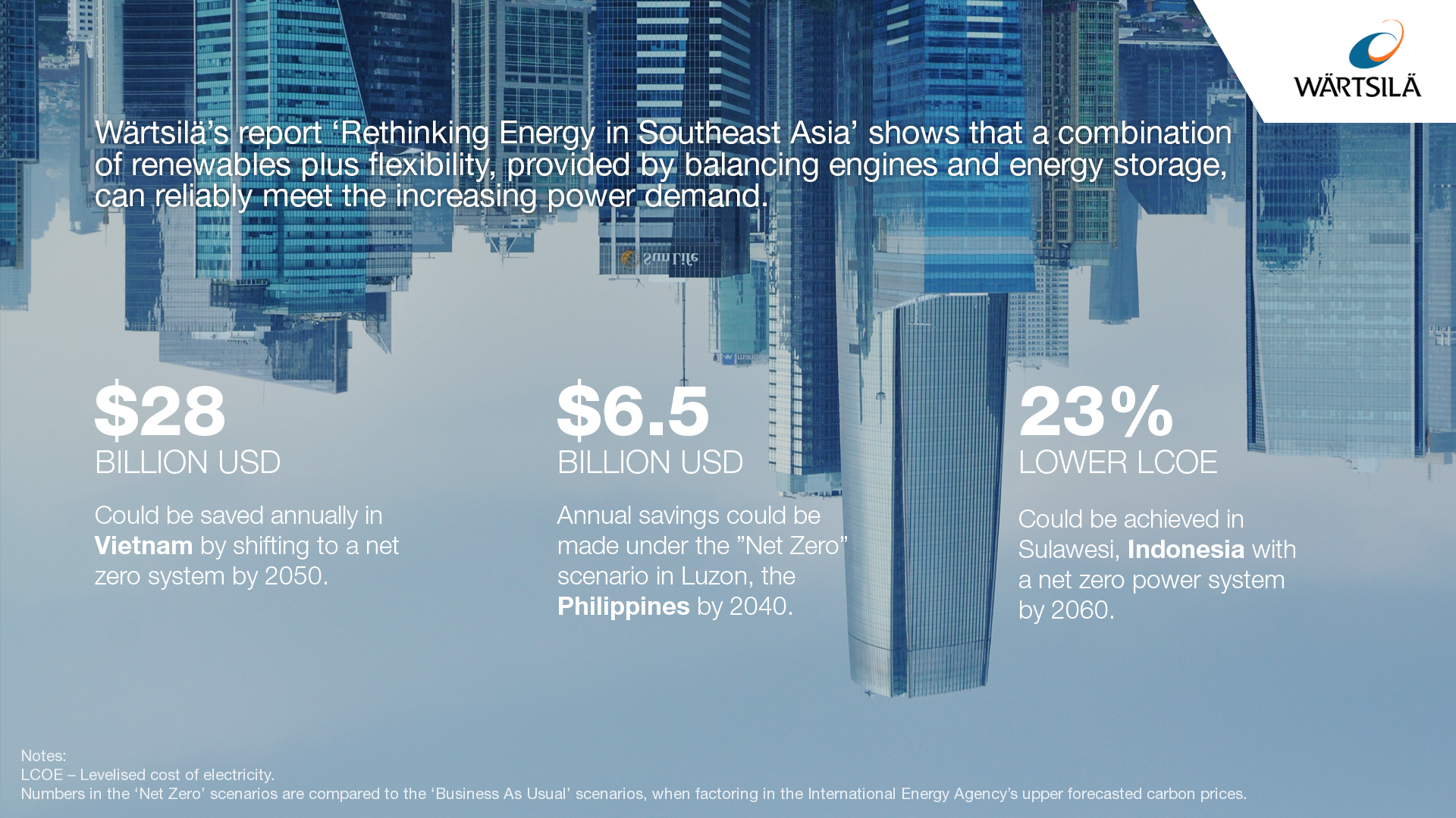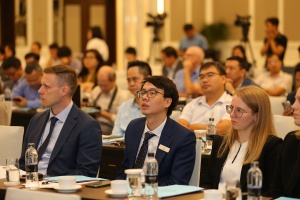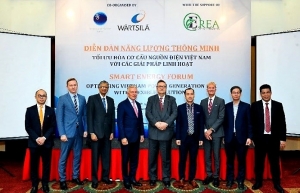Wartsila CEO explores outlook of Vietnam's energy transition
 |
Could you shed some light on Vietnam's energy transition?
Vietnam has come a long way and really solidified its position as a regional leader in the energy transition. Since the commendable COP26 target of reaching net zero by 2050, developments like the Just Energy Transition Partnership (JETP) financing agreement and the approved Power Development Plan VIII (PDP8) in 2023 clearly reflect the commitment to reaching the set goals.
In particular, the new “flexible generation” category in the PDP8, starting with 300MW by 2030 and increasing significantly to 46,200MW by 2050, is fully aligned with our view on the next phase of the transition. As Vietnam continues to scale down coal power plants and integrate more renewables into the system, significant amounts of flexible sources will be needed to ensure a stable energy supply amidst rapid demand growth.
How can Wartsila support the implementation of the JETP?
Under the JETP agreement, Vietnam has committed to stretching its goals of peaking emissions at 170 million metric tonnes by 2030 and generating at least 47 per cent of electricity from renewables the same year. The resource mobilisation plan for implementing Vietnam’s JETP deal calls for prioritising funding for renewables, energy storage, and grid infrastructure, as well as transitioning older coal power plants.
A few years ago, we conducted an advanced power system modelling study, in a report called Rethinking Energy in Southeast Asia, in which we laid down the cost-optimal steps needed for Vietnam to accelerate the energy transition and eventually reach its ambitious target of net zero by 2050. We are currently working closely with our local stakeholder, GENCO3, to develop the first flexible Reciprocating Internal Combustion Engines (RICE) power plant in the north of Vietnam to replace an existing old coal-fired power plant.
What are the advantages of Wartsila's RICE in balancing renewables and providing the needed flexibility for the energy transition?
RICE technology is well-known for its superb flexibility, as it can operate at very low minimum loads, reach full output within minutes of start-up, and ramp up and down quickly with multiple daily starts and stops as required. This allows RICEs to play an important role in meeting peak demand while maintaining system stability under the fluctuations in supply from solar and wind power plants.
RICEs will first operate on natural gas or LNG, and in the final stages of the energy transition, be converted to run on sustainable fuels such as green hydrogen when it becomes widely available and commercially feasible.
What are the key insights from Wartsila's "Rethinking Energy in Southeast Asia" report for the development of the Vietnamese power system?
Our "Rethinking Energy in Southeast Asia" report modelled the Vietnamese power system of the future, illustrating the cost-optimal path the country needs to take to achieve net zero by 2050. We have charted a practical roadmap for Vietnam in both the short and long term to reach net zero. The results show that renewables should already contribute to almost 50 per cent of the generation by the end of 2030. This means more investment is needed in renewable energy.
Given a more volatile system consisting of intermittent renewables, power markets need to keep up with the changing nature of power supply. To rapidly accelerate the adoption of wind and solar, flexible technologies like RICE power plants and energy storage need to be added to the system to respond to renewable fluctuations.
Is the current market design suited for the power systems of the future?
This is one of the crucial next steps that Vietnam needs to embark on to transition towards an optimal power system of the future. Following up with the conclusions from PDP8, besides urging the swift development of RICE technology in Vietnam, market design and mechanisms need to catch up with the changing needs of power supply and demand to ensure the financial viability of generation companies providing essential flexibility.
Updates to market mechanisms are needed to reward the value of flexible assets through the further development of the electricity markets, capacity payments for flexible generation sources, and ancillary services markets. These mechanisms can be tailored towards flexibility sources, ensuring that the right technology for the system is rewarded.
 | Vietnam's smooth transition to net zero by 2050 Wärtsilä has revealed that renewable-based power systems, backed by grid balancing engines and energy storage, can enable Vietnam to reach net zero by mid-century whilst cutting the levelled cost of electricity (LCOE) by 20 per cent when taking into account future carbon taxes. |
 | Flexible internal combustion engines - key to net-zero targets The technology group Wartsila, a global leader in providing flexible energy solutions, organised a seminar in Hanoi on November 8 titled Flexible internal combustion engines: technologies & solutions for Vietnam's power system. |
 | Wärtsilä taps flexible generation in Power Development Plan VIII Wärtsilä – a global technology group from Finland - is capitalising on the opportunities emerging from flexible generation under the Power Development Plan VIII (PDP8) with its internal combustion engine (ICE) technology. |
What the stars mean:
★ Poor ★ ★ Promising ★★★ Good ★★★★ Very good ★★★★★ Exceptional
Related Contents
Latest News
More News
- How AWS is powering the next-gen data era (December 09, 2025 | 13:14)
- Outlook in M&A solid for Singapore (December 08, 2025 | 10:31)
- Vietnamese firms are resetting their strategy for global markets (December 05, 2025 | 17:04)
- LPBank Securities accelerates AI and data innovation with AWS (December 05, 2025 | 09:00)
- Improving traceability capacity with Zebra Technologies (November 26, 2025 | 10:08)
- Ho Chi Minh City engages 500 CEOs in dialogue on building global megacity (November 25, 2025 | 16:00)
- CEO shares insights on Phu My 3 IP’s journey to green industrial growth (November 17, 2025 | 11:53)
- NS BlueScope CEO highlights decade of sustainable steel efforts (November 15, 2025 | 10:00)
- SCG maintains strong cash flow and drives low-carbon growth in Q3 (November 07, 2025 | 09:53)
- Thai Huong: a visionary business leader bridging Vietnam and Russia (November 05, 2025 | 17:00)

 Tag:
Tag:





















 Mobile Version
Mobile Version